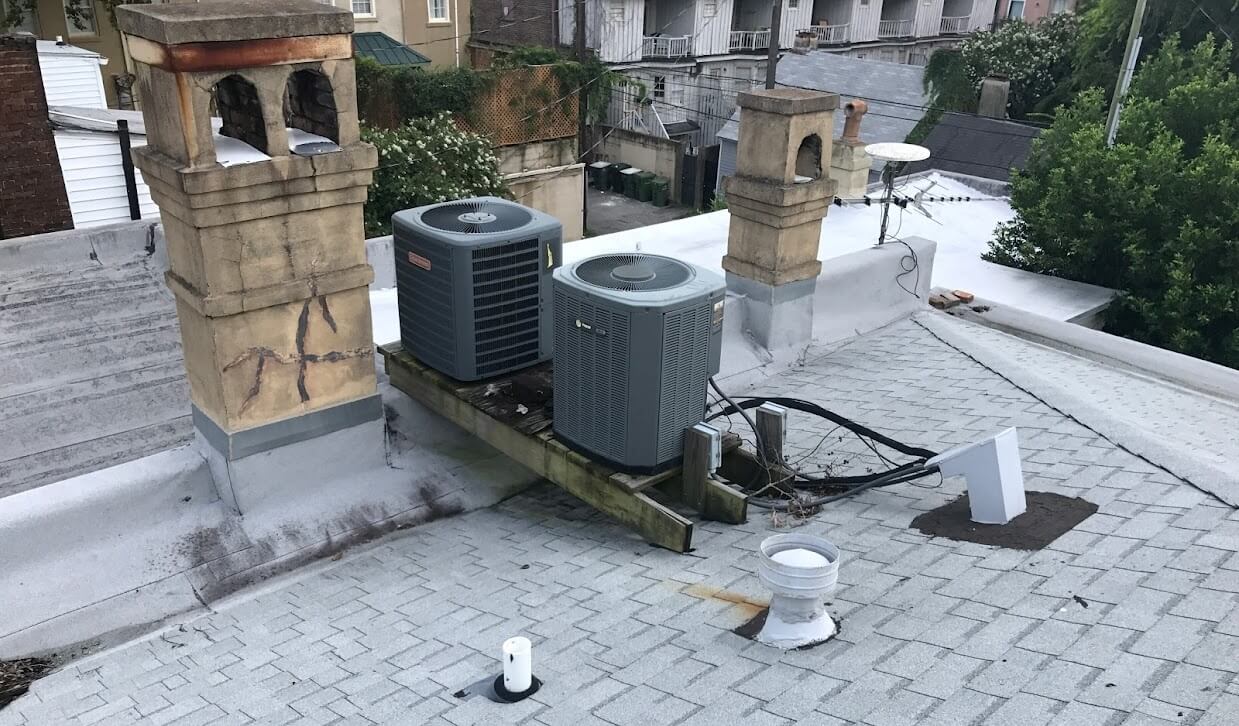
The attic in your home is a lot like you and me; It needs to be kept healthy, and it needs to breathe. If its health deteriorates, or it doesn't have access to proper oxygen flow, your attic will "get sick". Only, you can't take this guy into the hospital, and I guarantee you his bills will be a lot more expensive than the average Joe.
Just like doctors say, preventative care is the best kind of care, and the same goes for your attic. Here at RoofCrafters, our clients ask us about their attic ventilation frequently. For over 29 years we've addressed their concerns and answered their ventilation questions, and we know that while an apple a day won't keep the roofing contractor away, there are some tips and tricks you can abide by in order to make sure your attic stays in good working condition.
The answer is actually quite simple. While you want your home to be weather-tight, you don’t want your attic to be airtight. If your attic couldn’t breathe, it would trap both heat and moisture, neither of which are good for the roof or the contents contained inside. An airtight attic would work like a balloon by expanding in the summer and contracting in the winter, in turn undermining your roofing system and inevitably spawning pesky leaks.
If you're interested in learning how to avoid all that, you're in the right place. In this article, you'll be brushing up on how an attic breathes and why it must, ways you can tell if your attic has proper ventilation, and how often your vents should be cleaned. Let's get started, shall we?
How Does an Attic Breathe?
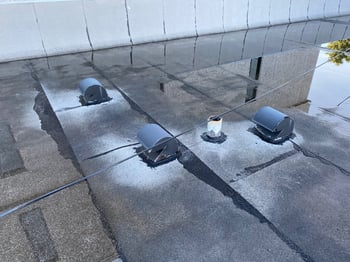
While your attic has neither lungs nor gills (we hope), it does indeed breathe. Intake vents located under the eaves allow fresh air into the attic. Intake vents are usually installed in the soffit either individually or as one continuous unit that runs the length of the soffit.
Gabled roofs may have vents located on the side of the house, within the peak of the gable. Exhaust vents located atop the roof allow hot air to escape the attic. Known as passive ventilation, this system promotes air exchange.
Exhaust vents come in three varieties:
-
Static vents
-
Ridge vents
-
Powered vents
Static vents often protrude from the roof like metal mushrooms because their covers are meant to exclude precipitation. Some static vents contain wind-powered blades meant to suck the air out of the attic any time the wind blows, like the whirlybird shown below.
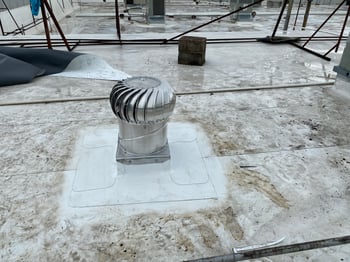
Ridge vents are a little harder to see since they run the length of the roofline. This type of exhaust vent works by leaving a screen-covered gap in the sheathing that runs along the ridge. This vent allows the heat in your attic to escape naturally.
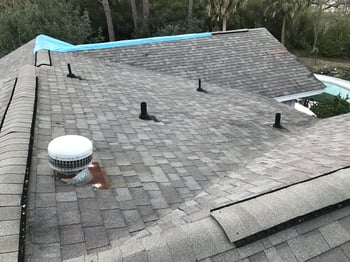
Powered exhaust vents use electricity to power an exhaust fan whenever the temperature inside the attic reaches a preset limit by setting a thermostat inside the attic the fan comes on and off without manually turning the switch. Power attic fans are rated to pull out so many cubic feet per minute. To keep from adding to your electric bill, these units come in a solar-power option. As a rule, your attic should have 1 square foot of vents for every 300 square feet of attic space.
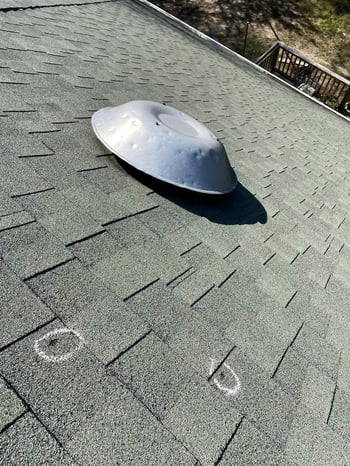
Why Does an Attic Need to Breathe?
Attic airflow largely depends on what type of insulation your attic has. If you have open-cell or closed-cell insulation, it doesn't matter as much. If you have conventional insulation, it does. There are three reasons why air needs to flow into and out of your attic:
First, if hot air gets trapped in your attic, it will add to the amount of time your air conditioner needs to run in the summertime. This will not only cost you more when you pay your utility bills, but it will also reduce the life of your HVAC system.
Second, without adequate ventilation, condensation can occur in your attic. This can lead to several problems, including mold, and damage to the attic insulation, not to mention potential damage to your roofing system and supporting timbers. The number one cause of roofing materials failing prematurely is, you guessed it, poor attic ventilation.
Third, for the northern regions, trapped heat in the attic can cause snow, ice, and frost to melt only to refreeze along the eaves, potentially undermining the shingles, tile, or metal that are attached there.
How Can I Tell if My Attic is Improperly Ventilated?
The first sign of inadequate ventilation would be an uptick in your utility bills. If your electric bill suddenly went sky high or your home’s heating and/or air conditioning system seems to be running non-stop, your attic ventilation may have been compromised. This can happen in several different ways. The vents could be clogged with dust or debris. This is fairly common in autumn when the leaves are falling from the trees.
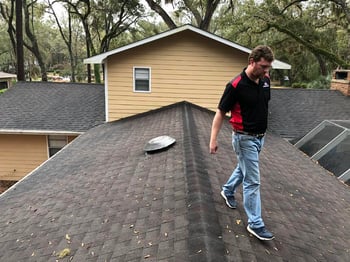
It’s also possible that squirrels or other wildlife decided to build a nest on or inside one of the attic vents. Professional roofing inspections are important for many reasons, especially when it comes to checking for proper attic ventilation. If you suspect your attic may not be in good working condition, be sure to reach out to your local roofing company.
How Often Should I Clean Out My Attic Vents?
If you want to maintain the optimal efficiency of attic ventilation, it’s a good idea to clean out the attic vents once a year. This can be done by using a can of compressed air to blow out dust, dirt, and loose insulation that can compromise ventilation by partially clogging the ridge vents. Soffit vents are best cleaned out with a broom. You may need a vacuum to clean out-static vents, although you may first have to remove the cap.
Before you turn on the vacuum, take the time to inspect the vent with a flashlight to look for any obvious obstructions. If there are a lot of leaves or a nest blocking the vent, you don’t want to suck that into the vacuum since it could clog it. If you can’t get your hand down the stack to remove a clog, try using ice tongs.
Is My Attic Properly Ventilated?
As you now know, your attic ventilation is one of the most important components of your home. Inadequate ventilation can wreak havoc on your entire home and cause unnecessary damage. Having the right ventilation along with enough will surely improve the efficiency of your roof and lower your utilities. While you can heed the advice in this article and check on the health of your attic, if you're having suspicions that you may be lacking proper ventilation, your best bet is to get in touch with a professional roofing contractor.
If you’re struggling to find the best contractor for the job, be sure to download “The Top 10 Most Critical Questions You Want to Ask Your Potential Roofing Contractor”. This checklist includes several different prompts to ask your roofer to prepare you to hold the company accountable for its quality of work and services when it comes to your attic inspection and any repairs that may follow.
If you're interested in learning more information about the importance of a proper roof ventilation system, head to our learning center and check out our article, "What You Need to Know About Roofing Ventilation Systems" so you can be better versed in your attic ventilation venture.
At RoofCrafters, our mission is to provide job opportunities for others to thrive and grow while making a meaningful impact within our communities.




